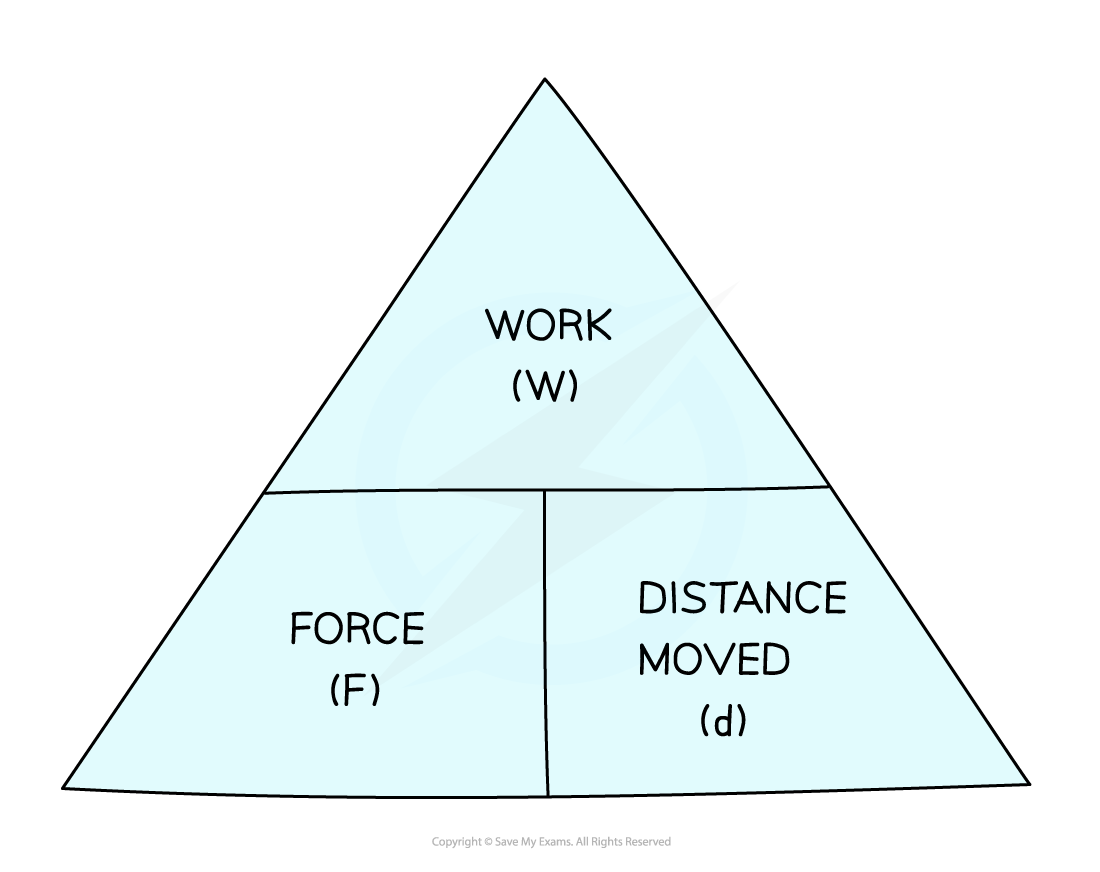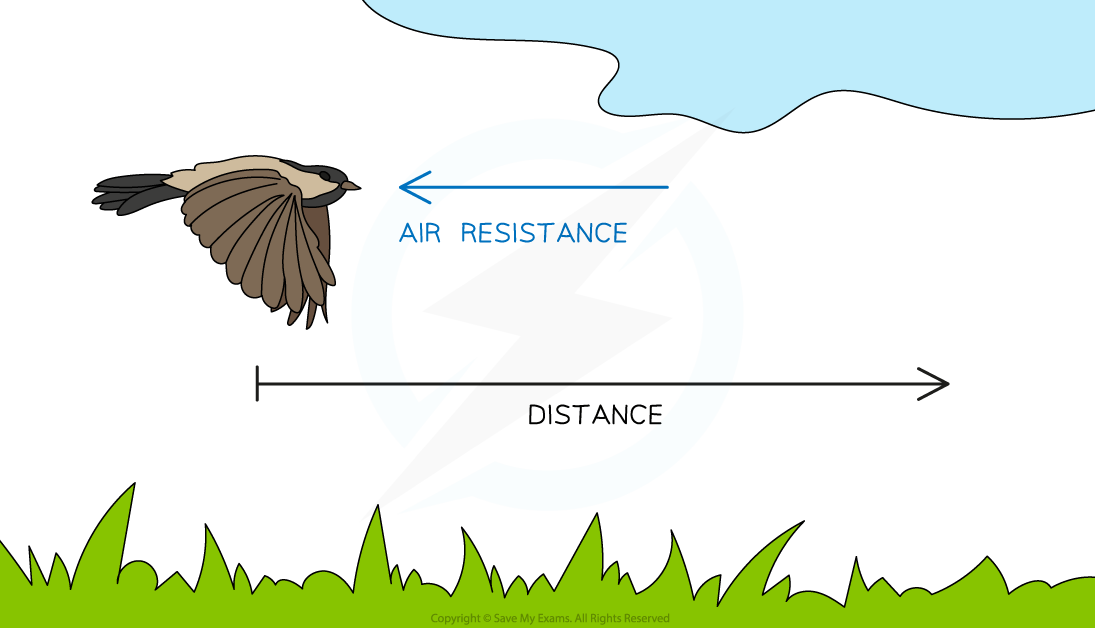Work Done (SQA National 5 Physics): Revision Note
Exam code: X857 75
Work done
Work is done when an object is moved over a distance by a force applied in the direction of its displacement
It is said that the force does work on the object
If a force is applied to an object but doesn’t result in any movement, no work is done
When work is done, energy is transferred
Work done is equal to the amount of energy transferred
If a force acts in the same direction as the object's movement, then the object gains energy
If a force acts in the opposite direction to the object's movement, then the object loses energy
Work done pushing a box

Calculating work done
The relationship between work done, force, and distance is:
Where:
= work done, or energy transferred, measured in joules (J) or newton-metres (N m)
= force applied, measured in newtons (N)
= distance in metres (m)
Relationship triangle for work done, force and distance

Using relationship triangles is covered in more detail in the revision note on motion relationships
Examples of work done
Work is done on a ball when it is lifted to a height above the ground:
A force is required to lift the ball
Work is done against the weight force to lift the ball through the gravitational field
Energy is transferred as work is done

Work is done when a bird flies through the air
A force is required to overcome the drag force
Work is done against the drag force as the bird flies over a distance
Energy is transferred as work is done
Work done by a bird

Worked Example
A car moving at speed begins to apply the brakes. The brakes of the car apply a force of 500 N, which brings it to a stop after 23 m.

Calculate the work done by the brakes in stopping the car.
Answer:
Step 1: List the known quantities
Distance,
Force,
Step 2: Write down the relationship between work, force, and distance
Step 3: Calculate the work done on the car by the brakes
Step 4: Round to an appropriate number of significant figures
The lowest number of significant figures in the input values in 1 s.f. (500 N)
Therefore, the final answer must be rounded to 1 s.f.
Examiner Tips and Tricks
Remember to always convert the distance into metres and force into newtons so that the work done is in joules or newton-metres

Unlock more, it's free!
Did this page help you?